Abstract
Elemental boron was isolated in 1808. It typically occurs in nature as borates hydrated with varying amounts of water. Important compounds are boric acid and borax. Boron compounds are also used in the production of metals, enamels, and glasses. In trace amounts, boron is essential for the growth of many plants, and is found in animal and human tissues at low concentrations. Poisoning in humans has been reported as the result of accidental ingestion or use of large amounts in the treatment of burns. Boron as boric acid is fairly rapidly absorbed and excreted from the body via urine. The half-life of boric acid in humans is on the order of 1 day. Boron does not appear to accumulate in soft tissues of animals, but does accumulate in bone. Normal levels of boron in soft tissues, urine, and blood generally range from less than 0.05 ppm to no more than 10 ppm. In poisoning incidents, the amount of boric acid in brain and liver tissue has been reported to be as high as 2000 ppm. Recent studies at the National Institute of Environmental Health Sciences have indicated that boron may contribute to reduced fertility in male rodents fed 9000 ppm of boric acid in feed. Within a few days, boron levels in blood and most soft tissues quickly reached a plateau of about 15 ppm. Boron in bone did not appear to plateau, reaching 47 ppm after 7 days on the diet. Cessation of exposure to dietary boron resulted in a rapid drop in bone boron.(ABSTRACT TRUNCATED AT 250 WORDS)
Full text
PDF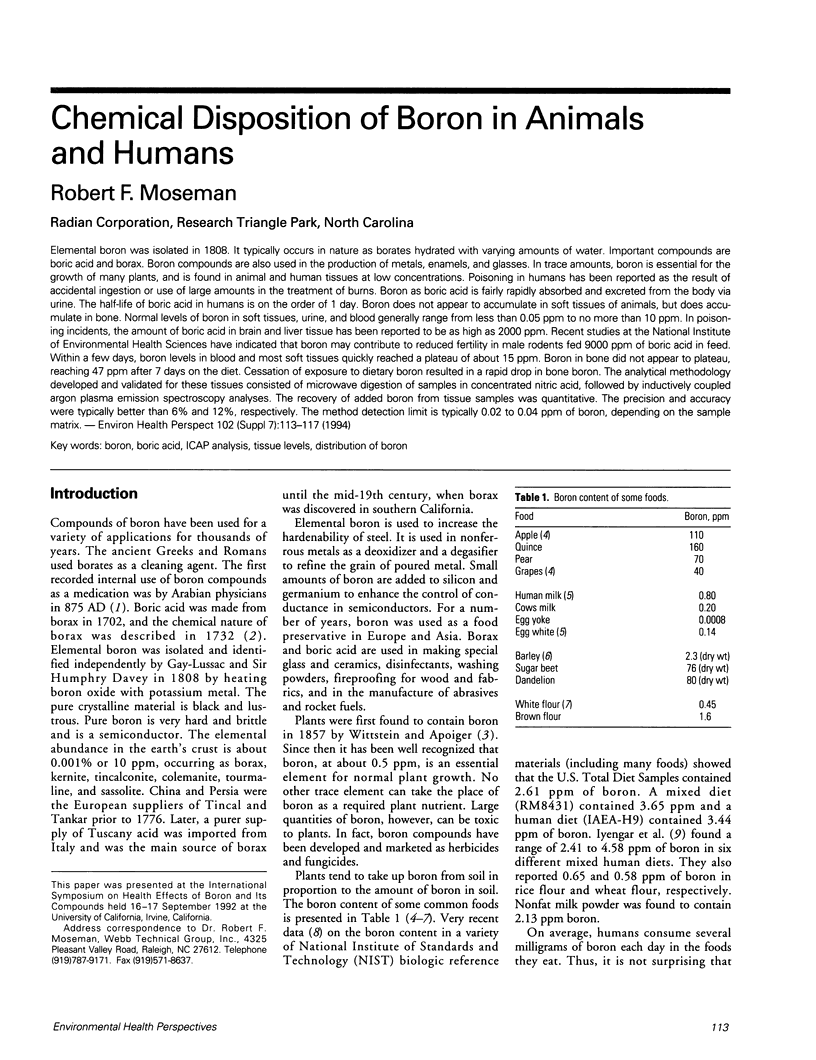
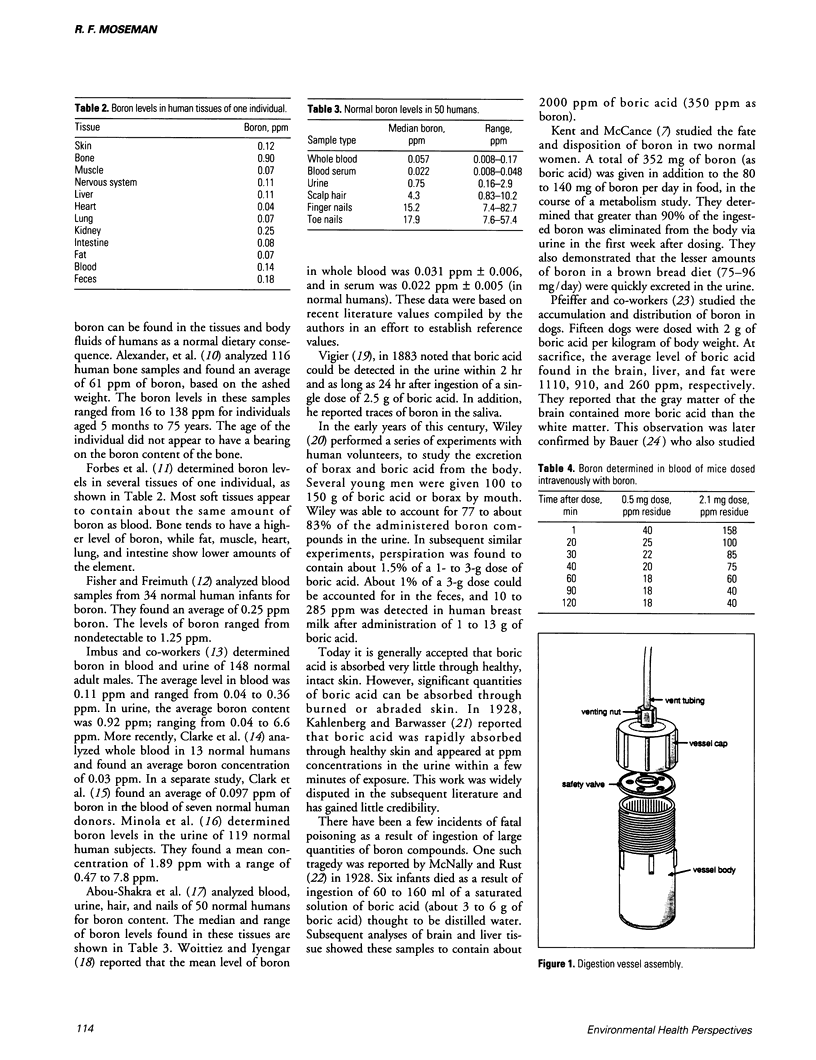
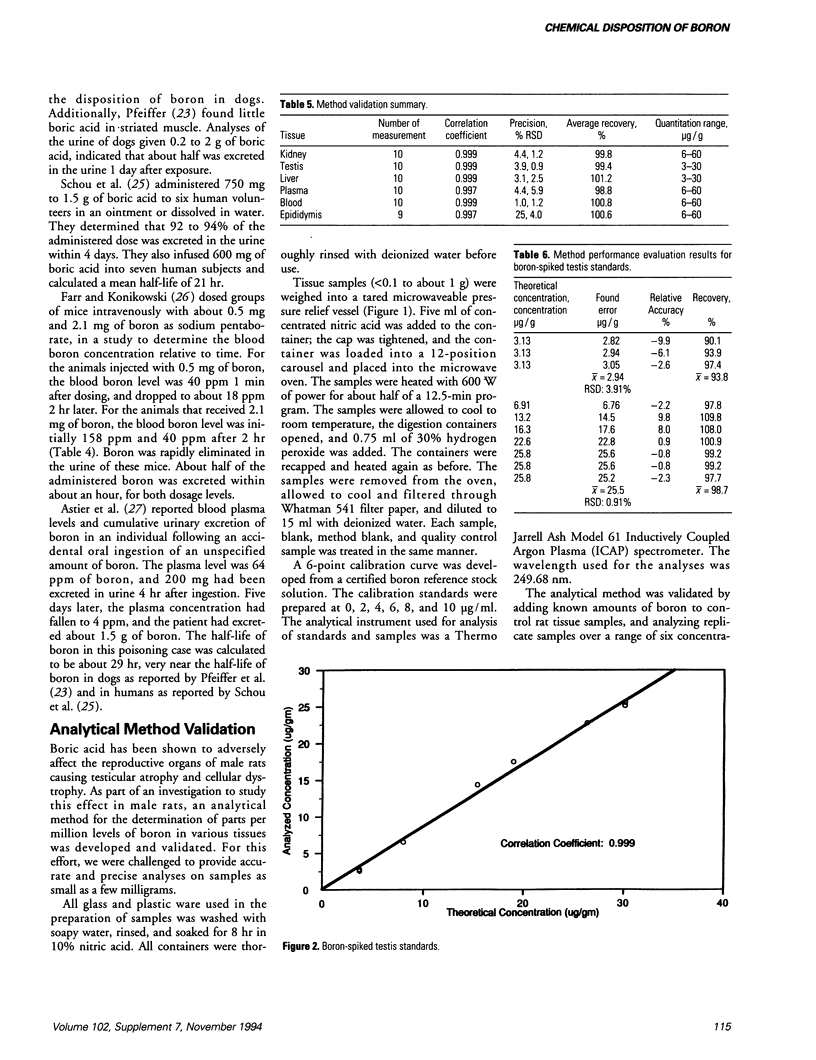
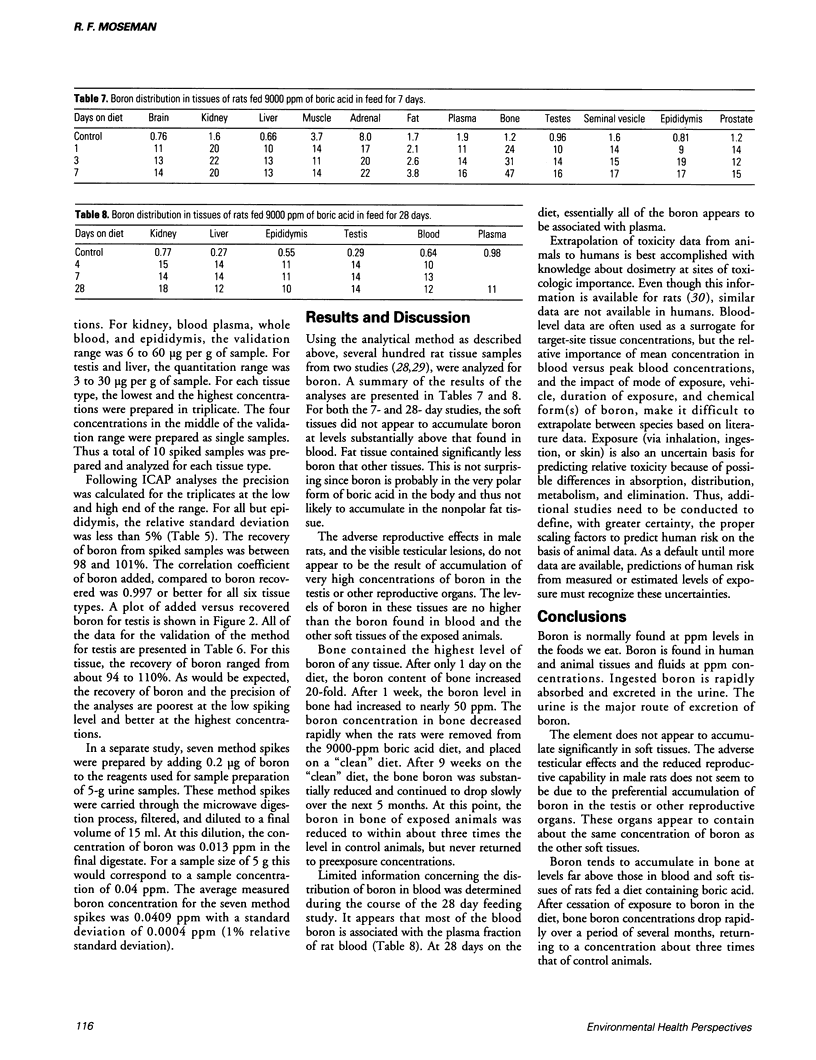
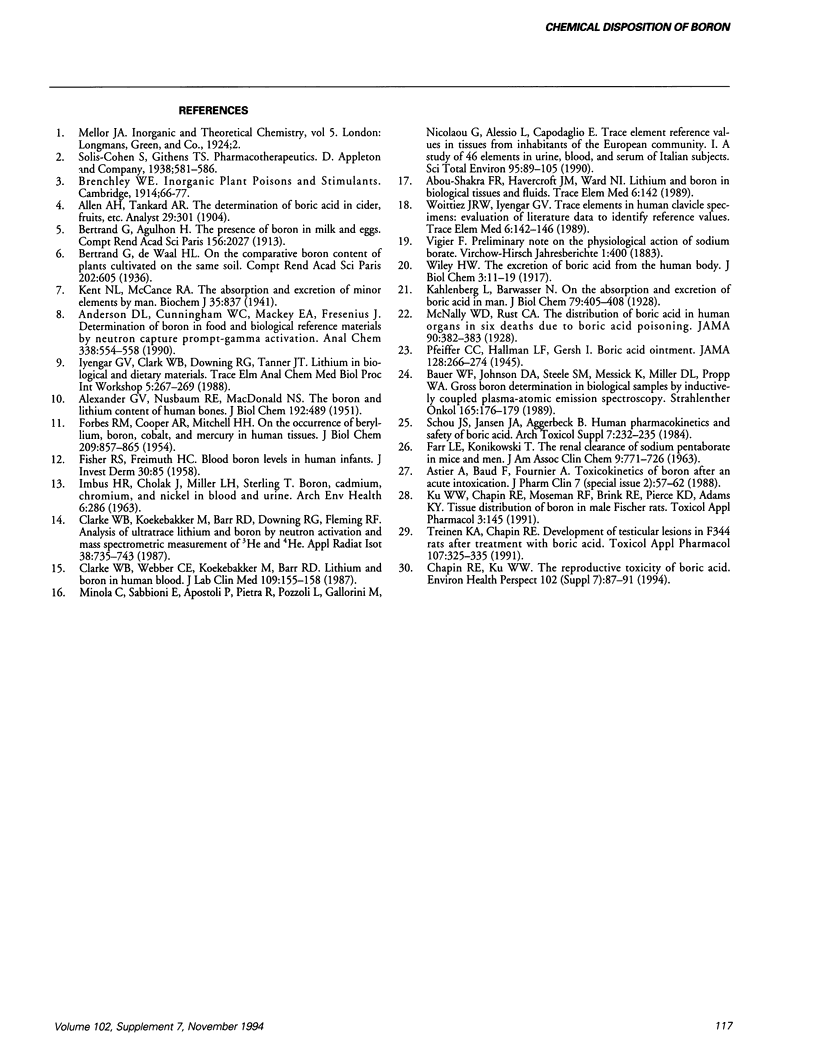
Selected References
These references are in PubMed. This may not be the complete list of references from this article.
- ALEXANDER G. V., NUSBAUM R. E., MacDONALD N. S. The boron and lithium content of human bones. J Biol Chem. 1951 Oct;192(2):489–496. [PubMed] [Google Scholar]
- Bauer W. F., Johnson D. A., Steele S. M., Messick K., Miller D. L., Propp W. A. Gross boron determination in biological samples by inductively coupled plasma-atomic emission spectroscopy. Strahlenther Onkol. 1989 Feb-Mar;165(2-3):176–179. [PubMed] [Google Scholar]
- Chapin R. E., Ku W. W. The reproductive toxicity of boric acid. Environ Health Perspect. 1994 Nov;102 (Suppl 7):87–91. doi: 10.1289/ehp.94102s787. [DOI] [PMC free article] [PubMed] [Google Scholar]
- Clarke W. B., Koekebakker M., Barr R. D., Downing R. G., Fleming R. F. Analysis of ultratrace lithium and boron by neutron activation and mass-spectrometric measurement of 3He and 4He. Int J Rad Appl Instrum A. 1987;38(9):735–743. doi: 10.1016/0883-2889(87)90255-3. [DOI] [PubMed] [Google Scholar]
- Clarke W. B., Webber C. E., Koekebakker M., Barr R. D. Lithium and boron in human blood. J Lab Clin Med. 1987 Feb;109(2):155–158. [PubMed] [Google Scholar]
- FARR L. E., KONIKOWSKI T. THE RENAL CLEARANCE OF SODIUM PENTABORATE IN MICE AND MEN. Clin Chem. 1963 Dec;11:717–726. [PubMed] [Google Scholar]
- FISHER R. S., FREIMUTH H. C. Blood boron levels in human infants. J Invest Dermatol. 1958 Feb;30(2):85–86. [PubMed] [Google Scholar]
- FORBES R. M., COOPER A. R., MITCHELL H. H. On the occurrence of beryllium, boron, cobalt, and mercury in human tissues. J Biol Chem. 1954 Aug;209(2):857–865. [PubMed] [Google Scholar]
- IMBUS H. R., CHOLAK J., MILLER L. H., STERLING T. Boron, cadmium, chromium, and nickel in blood and urine. A survey of American working men. Arch Environ Health. 1963 Feb;6:286–295. doi: 10.1080/00039896.1963.10663391. [DOI] [PubMed] [Google Scholar]
- Kent N. L., McCance R. A. The absorption and excretion of ;minor' elements by man: Silver, gold, lithium, boron and vanadium. Biochem J. 1941 Jul;35(7):837–844. doi: 10.1042/bj0350837. [DOI] [PMC free article] [PubMed] [Google Scholar]
- Ku W. W., Chapin R. E., Moseman R. F., Brink R. E., Pierce K. D., Adams K. Y. Tissue disposition of boron in male Fischer rats. Toxicol Appl Pharmacol. 1991 Oct;111(1):145–151. doi: 10.1016/0041-008x(91)90143-3. [DOI] [PubMed] [Google Scholar]
- Minoia C., Sabbioni E., Apostoli P., Pietra R., Pozzoli L., Gallorini M., Nicolaou G., Alessio L., Capodaglio E. Trace element reference values in tissues from inhabitants of the European community. I. A study of 46 elements in urine, blood and serum of Italian subjects. Sci Total Environ. 1990 Jun;95:89–105. doi: 10.1016/0048-9697(90)90055-y. [DOI] [PubMed] [Google Scholar]
- Schou J. S., Jansen J. A., Aggerbeck B. Human pharmacokinetics and safety of boric acid. Arch Toxicol Suppl. 1984;7:232–235. doi: 10.1007/978-3-642-69132-4_32. [DOI] [PubMed] [Google Scholar]
- Treinen K. A., Chapin R. E. Development of testicular lesions in F344 rats after treatment with boric acid. Toxicol Appl Pharmacol. 1991 Feb;107(2):325–335. doi: 10.1016/0041-008x(91)90212-w. [DOI] [PubMed] [Google Scholar]


